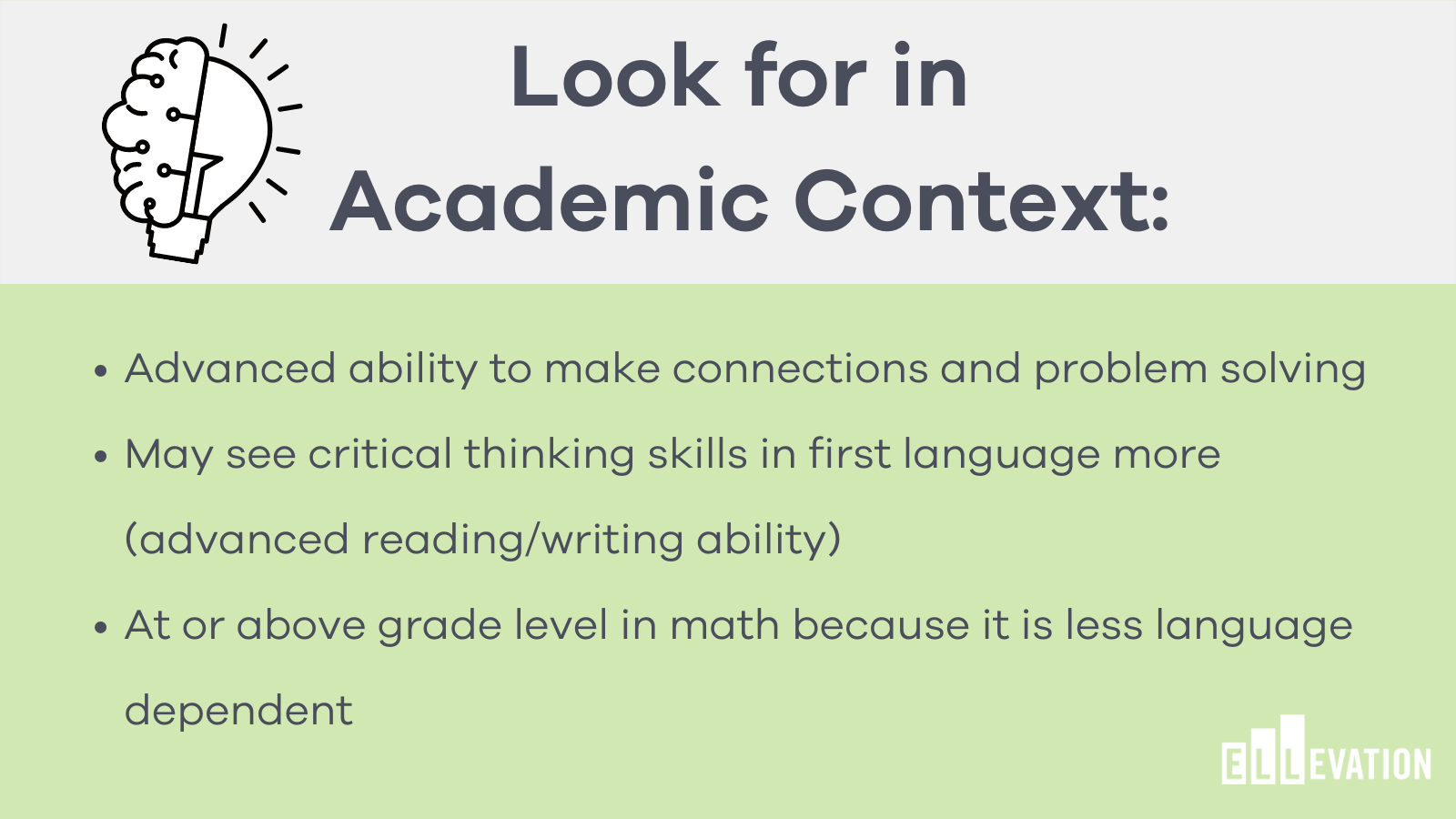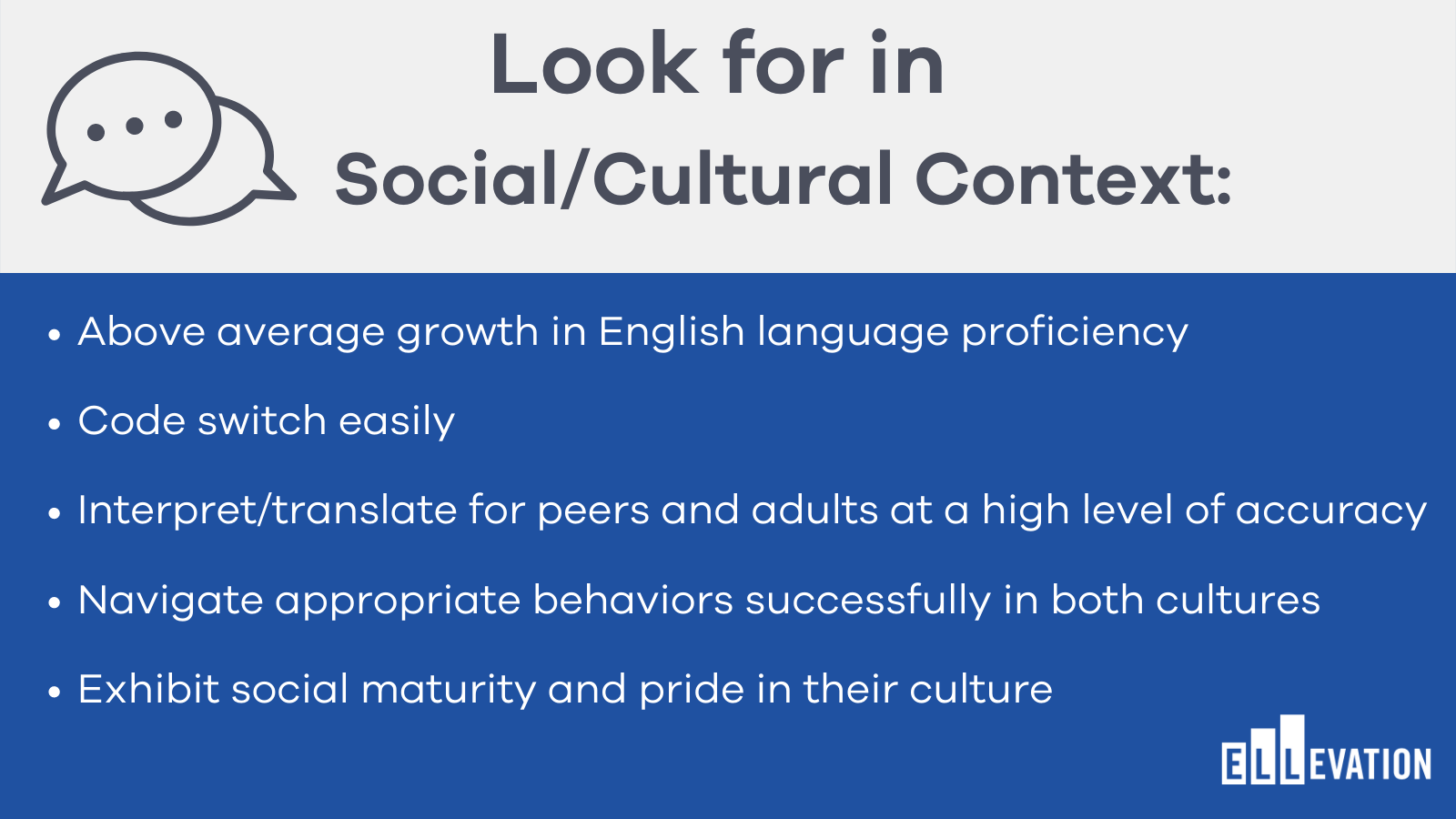Identifying and Supporting Gifted and Talented ELs


Identifying and Supporting Gifted and Talented ELs
English learners (ELs) are largely underrepresented in gifted and talented programs. We know many multilingual students qualify, so to a large extent, the issue is rooted in poor identification, deficit-based thinking, and other barriers that stand in their way.
We had a conversation with Marcy Voss, Educational Consultant and ELL Coach with 36 years of experience in public education, to discuss what teachers need to know to better identify gifted and talented ELs and how to create learning environments that both support and challenge these and all students.
1. IDENTIFY: Recognize the key characteristics of gifted and talented ELs.
The first step in this process is making sure educators know what the key identifiers of gifted and talented multilingual learners are. These may look different from native English speakers, which is one reason educators may not recognize them. Marcy shared a cohesive list of “what to look for” in the episode, which we’ve outlined in the graphic below:


2. SUPPORT: Use differentiation and scaffolds to accommodate language differences.
Regardless of students’ gifted and talented status, any student learning in a new language will need certain supports to be successful. Marcy notes that all students, but particularly ELs, benefit from the use of sheltered instruction, or integrating language instruction with content instruction. Strategies like the use of graphic organizers or pre-teaching academic vocabulary should always be available for ELs and all students. However, these strategies alone are not sufficient for providing the challenge our gifted and talented ELs need.
“Sheltered instruction is a way that we support the language learning needs of our multilingual students. But in and of itself, it doesn't exactly address thinking.”
3. CHALLENGE: Give students the opportunity to think critically and in a complex way.
Once language supports are in place, it is crucial to encourage students to extend their thinking and engage more deeply and rigorously with the content. Marcy recommends using the training model called Depth and Complexity, a framework of thinking to help students build a deeper understanding of the content.
“Many gifted programs use this model of thinking as a way to address the advanced learning needs of their gifted students. But actually the model can be used in any classroom to give students an opportunity to develop and display their thinking abilities.”
Incorporating Depth and Complexity with sheltered education strategies can address the learning and language needs of our gifted multilingual students.
Try this tomorrow: In a lesson, provide a graphic organizer like a chart or graph (sheltered instruction) but ask students to look for patterns in the data (depth and complexity).
Find the full episode transcript here.
Episode Resources:
- Watch the Moises in Math Class video
- Purchase Marcy’s Academic Language Cards and her TALK Cards (Thinking with Academic Language and Knowledge) which incorporate sheltered instruction (sentence stems) with Depth and Complexity
- Read 7 Steps to a Language Rich Classroom by John Seidlitz and Bill Perryman
Marcy Voss is an Educational Consultant who has recently retired after 36 years in public education. During her career, Marcy taught elementary and middle school students, as well as coordinated Gifted and Special Programs in several districts. As Special Programs Coordinator for Boerne ISD, Marcy helped develop and implement their Two-Way Dual Language Program.
Marcy currently serves as an ELL Coach, curriculum writer, and staff development trainer. Her passion is helping ELL students to think at higher levels through the use of differentiated curriculum that incorporates depth and complexity. She is also interested in identifying and serving gifted ELL students. Marcy is the author of the Academic Language Cards which provide activities using sentence stems requiring higher level thinking. Marcy has a B.S. in Elementary Education from the University of Texas at Austin, a M.Ed. in Educational Psychology with a Specialization in Gifted Education from Texas A&M University at College Station, and a Mid-Management certification from the University of Texas at San Antonio.